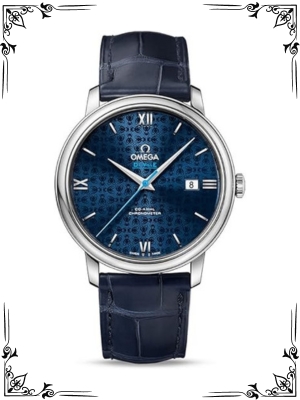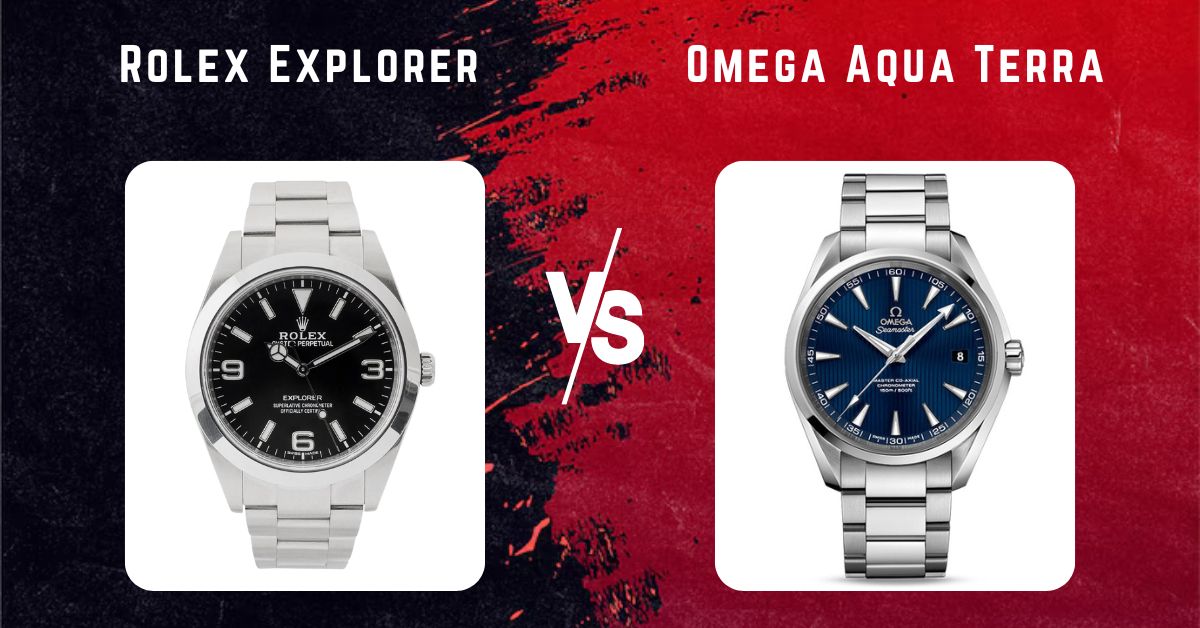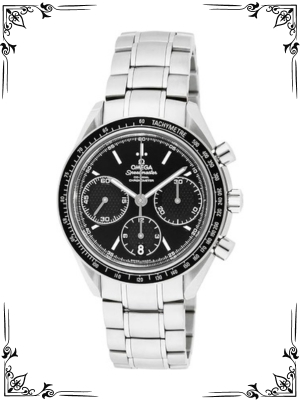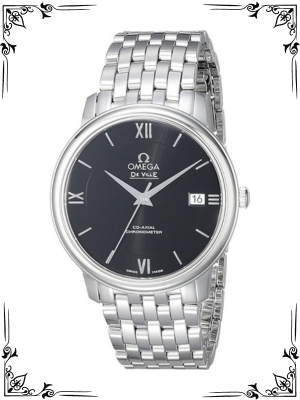For watch enthusiasts, the debate between Omega and Rolex is a longstanding and passionate one. Both brands occupy the pinnacle of Swiss watchmaking, boasting rich histories, impeccable craftsmanship, and iconic timepieces that have transcended mere function to become cultural symbols.
But beneath the surface of luxury and prestige lie distinct personalities. This comprehensive guide delves into the intricacies of Omega and Rolex, helping you navigate this epic watch showdown and choose the brand that best suits your style and aspirations.
Brand History and Identity
Omega: The Pioneer of Innovation
Founded in 1848 by Louis Brandt, Omega has consistently pushed the boundaries of watchmaking technology.
From their early focus on precision pocket watches to their groundbreaking role in space exploration with the Speedmaster Professional (Moonwatch), Omega has built a legacy of innovation.
They are renowned for their commitment to high-quality automatic movements, their Master Chronometer certification exceeding industry standards for accuracy, and their use of cutting-edge materials like ceramic and liquid metal.
Here are some specific examples of Omega’s innovative spirit:
Co-Axial Escapement: In 1999, Omega revolutionized mechanical watchmaking with the introduction of the Co-Axial Escapement. This ingenious design significantly reduces friction within the movement, leading to improved accuracy and longer service intervals.
Speedmaster Professional: This iconic chronograph not only achieved fame for being the first watch worn on the moon during the Apollo 11 mission, but it also played a critical role when Buzz Aldrin’s electrical timing system malfunctioned. The Speedmaster’s reliability under extreme conditions cemented its place in horological history.
Seamaster 300M: A descendant of the watches issued to British Royal Navy divers in the 1950s, the Seamaster 300M represents Omega’s dedication to creating professional-grade diving watches that combine functionality with sophisticated style.
Rolex: The Epitome of Luxury
Hans Wilsdorf established Rolex in 1905 with a vision of creating the ultimate luxury wristwatch. Rolex has meticulously cultivated an image of prestige and exclusivity. Their timepieces are meticulously crafted from the finest materials, known for their robust construction and timeless designs.
Rolex boasts iconic models like the Oyster Perpetual Submariner, the quintessential dive watch, and the Daytona, a legendary chronograph favored by racing enthusiasts.
Here’s a deeper look into Rolex’s brand identity:
Oyster Case: In 1926, Rolex unveiled the Oyster Case, the world’s first commercially available waterproof wristwatch. This innovation revolutionized the watch industry, paving the way for modern dive watches.
Marketing and Brand Building: Rolex is a master of brand marketing. Their association with celebrities, athletes, and high-profile events has cemented their position as a symbol of success and luxury. The strategic limitation of production quantities further inflates their desirability and resale value.
Evolution, not Revolution: Unlike Omega, Rolex prioritizes evolution over revolution in their designs. Their core models, like the Submariner and Datejust, have remained largely unchanged for decades, a testament to their enduring appeal and focus on timeless elegance.
Design and Style
Omega: A Spectrum of Styles
Omega offers a diverse range of styles, catering to a broader audience. Their Speedmaster collection embodies a sporty aesthetic, perfect for those seeking a timepiece with a rich heritage in motorsports and space exploration.
The Seamaster line leans towards a sophisticated elegance, ideal for both dressy and sporty occasions. The De Ville collection exudes classic charm with a focus on minimalist design, while the Constellation series features a unique, multi-pronged bezel for those who appreciate a distinctive look.
Omega embraces modern materials like ceramic for a contemporary look while still offering timeless stainless steel and gold options.

Rolex: Evolution Within Tradition
Rolex maintains a more conservative design approach, prioritizing classic aesthetics that transcend trends. Their watches are known for their clean lines, robust Oyster cases, and instantly recognizable bezels, like the fluted bezel on the Datejust and the rotating diver’s bezel on the Submariner.
While subtle updates occur over time, Rolex prioritizes timeless elegance and functionality. Their core materials are stainless steel, gold, and platinum, with a focus on enduring quality and lasting value.
Movements and Technology
The beating heart of any watch is its movement, the intricate mechanism that governs timekeeping. When it comes to Omega and Rolex, their approaches to movements reveal their distinct philosophies.
Omega: Pushing the Frontiers of Innovation
Omega embraces cutting-edge technology, constantly seeking to refine and improve its movements. Their signature innovation is the Co-Axial escapement, a revolutionary design that significantly reduces friction within the movement. This translates to enhanced accuracy, longer service intervals, and improved resistance to wear and tear.
Omega goes beyond the Co-Axial escapement, implementing a range of advancements:
Master Chronometer Certification: This in-house standard exceeds COSC chronometer certification, subjecting movements to rigorous testing for magnetic resistance, accuracy, and performance.
Silicon Balance Springs: These lightweight, anti-magnetic components further enhance shock resistance and magnetic immunity within the movement.
Anti-magnetic Materials: Omega incorporates materials like niobium to shield their movements from magnetic fields, a growing concern in today’s tech-saturated world.
Co-Axial Escapement Refinements: The Co-Axial escapement has undergone continuous improvements over the years, offering smoother operation and potentially longer service intervals.
Omega’s dedication to innovation is evident in its diverse range of movements, catering to both automatic and quartz enthusiasts.
Rolex: The Hallmark of Reliability
Rolex takes a more traditional approach, prioritizing robust construction and meticulous craftsmanship in their movements. They manufacture their movements entirely in-house, ensuring complete control over quality and performance. Rolex calibers are renowned for their:
Caliber Stability: Built to last, Rolex movements utilize high-quality materials and conservative designs that prioritize long-term reliability. Regular servicing is still essential, but Rolex calibers are known for maintaining excellent timekeeping performance for decades.
In-House Innovation: While not focused on constant revolution, Rolex does incorporate innovative solutions within its movements. For instance, their parachrom hairspring is crafted from a special anti-magnetic alloy, enhancing the movement’s resistance to magnetism.
COSC Chronometer Certification: All Rolex mechanical movements are COSC-certified, guaranteeing their accuracy meets industry standards.
The focus on proven technology and meticulous construction ensures Rolex movements deliver exceptional timekeeping performance and reliability.
In essence, Omega and Rolex offer contrasting approaches to movements. Omega prioritizes cutting-edge features and pushes the boundaries of technology, while Rolex champions unwavering reliability and enduring performance.
The choice between them boils down to your personal preferences: do you crave the most innovative features or prioritize the timeless dependability Rolex is known for?
Popular Models
Both Omega and Rolex boast a legacy of iconic timepieces, each holding a special place in the hearts of watch enthusiasts. Here’s a closer look at some of their most popular models:
Omega:
Speedmaster Professional (Moonwatch): This legendary chronograph achieved fame for being the first watch worn on the moon during the Apollo 11 mission. Its robust construction, distinctive design, and historical significance make it a timeless classic.
Seamaster 300M: A descendant of the watches issued to British Royal Navy divers in the 1950s, the Seamaster 300M represents Omega’s commitment to professional-grade dive watches. It offers exceptional water resistance, a modern design aesthetic, and a rich heritage.
Constellation: Known for its unique multi-pronged bezel, the Constellation collection exudes elegance and sophistication. It caters to those who appreciate a distinctive timepiece with a blend of modern and classic design elements.
De Ville: This collection embodies classic charm with a focus on minimalist design. The De Ville offers a variety of styles, from dress watches to more contemporary options, making it a versatile choice for everyday wear.
Rolex:
Submariner: The quintessential dive watch, the Submariner is renowned for its water resistance, robust construction, and timeless design. It has become a cultural icon, favored by both professional divers and watch enthusiasts alike.
Datejust: A symbol of elegance and sophistication, the Datejust features a classic Oyster case with a fluted bezel and a date window. It is available in a wide range of materials and dial options, offering versatility and enduring style.
Daytona: A legendary chronograph steeped in racing heritage, the Daytona is a favorite among motorsports enthusiasts and collectors. Its functionality, distinctive design, and association with the world of motor racing have solidified its iconic status.
Explorer: Originally designed for mountaineers, the Explorer is a testament to Rolex’s commitment to creating robust and functional timepieces. Its clean lines, excellent legibility, and durability make it a popular choice for everyday wear.
These are just a few examples of the many popular models offered by Omega and Rolex. Ultimately, the “best” model depends on your individual preferences, style, and intended use. Consider the features you prioritize, the aesthetics that resonate with you, and your budget when making your choice.
Price and Target Audience
Omega: Relative Value in Luxury
Omega watches occupy a slightly lower price point compared to Rolex on average. This makes them an attractive option for watch enthusiasts seeking a high-quality luxury timepiece with innovative features without the astronomical price tag of some Rolex models. Omega targets a broader audience:
Tech-Savvy Enthusiasts: Those who appreciate the cutting-edge technology and features incorporated into Omega’s Master Chronometer movements.
Style-Conscious Individuals: Omega offers a wider range of styles, catering to those who prefer a modern or sporty aesthetic alongside classic elegance.
Value Seekers: Watch enthusiasts who prioritize features and innovation at a slightly more accessible price point compared to Rolex.
Rolex: The Ultimate Status Symbol
Rolex watches are undeniably expensive, often fetching high prices due to their brand prestige, exclusivity, and strong resale value. They cater to a discerning clientele seeking the ultimate status symbol, a timepiece that represents success and luxury. Here’s a breakdown of their target audience:
Luxury Watch Collectors: Individuals who prioritize brand heritage, timeless design, and the investment potential associated with Rolex timepieces.
Status-Conscious Buyers: For those seeking a watch that signifies achievement and social standing, a Rolex can be a coveted emblem of success.
Generational Heirlooms: Rolex watches are often passed down through generations, solidifying their position as cherished family possessions.
Conclusion
Choosing between Omega and Rolex comes down to personal preference. Consider these factors to guide your decision:
Budget: If budget is a major concern, Omega might be a better option.
Style: Do you prefer a modern, sporty aesthetic (Omega) or a classic, elegant look (Rolex)?
Features: Do you prioritize cutting-edge technology (Omega) or proven reliability (Rolex)?
Brand Identity: Do you resonate more with Omega’s innovative spirit or Rolex’s aura of luxury and tradition?
Ultimately, the best brand is the one that resonates most with your taste and watch-collecting aspirations. Both Omega and Rolex offer exceptional timepieces, each with a distinct personality waiting to be discovered on your wrist.
FAQs
Which brand is more accurate?
Both Omega and Rolex prioritize accuracy. Omega boasts its Master Chronometer certification, exceeding COSC standards for accuracy and magnetic resistance. However, Rolex movements are COSC-certified and renowned for their long-term reliability.
In essence, both offer exceptional timekeeping, with Omega potentially offering a slight edge in outright precision.
Which brand offers more variety in styles?
Omega features a wider range of styles, catering to a broader audience. They offer sporty chronographs like the Speedmaster, sophisticated divers like the Seamaster, and elegant dress watches like the De Ville.
Rolex maintains a more conservative design approach, prioritizing timeless elegance with their Submariner, Datejust, and Explorer models.
Is Rolex a better investment?
Rolex watches tend to hold their value, or even appreciate, over time due to their brand prestige and limited production quantities. Omega watches may depreciate slightly, but they offer a more accessible entry point into the luxury watch market.
Ultimately, both can be cherished possessions, but Rolex offers a stronger case for pure investment potential.
Which brand is more innovative?
Omega embraces cutting-edge technology with its Co-Axial escapement, Master Chronometer certification, and use of silicon components. Rolex prioritizes proven technology and meticulous construction, focusing on long-term reliability over constant revolution.
So, if you crave the latest advancements, Omega might be the more innovative choice.
Which brand is right for me?
This depends on your priorities! Consider your budget, preferred style (sporty vs. classic), desired features (cutting-edge tech vs. proven reliability), and brand image. Ultimately, the best brand is the one that resonates most with your taste and watch-collecting aspirations.
Try them on, research specific models, and choose the timepiece that speaks to you.



